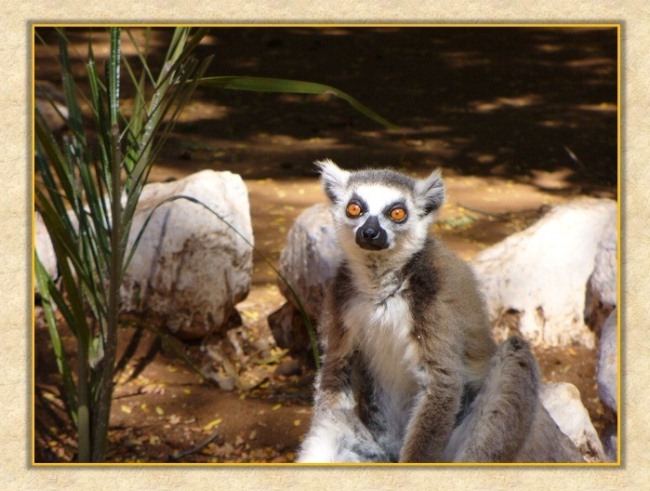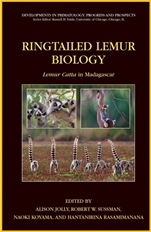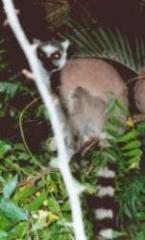Ringtailed Lemurs (Lemur catta) |
-Ruoso.jpg)
© Cyril Ruoso, www.ruoso-grundmann.com
More info about ringtailed lemurs... |
Ringtailed lemurs were the first lemur species named by Linnaeus, possibly for their cat-like contact "meows". At Berenty they live in multi-male, multi-female troops numbering between 3 and 34. Each troop has a circumscribed core area or territory, marked by genital marks and by the wrist-spurs of the males. Females defend the territory against other troops. Daughters remain in the troop of their birth unless targeted and exiled by other females. Females are wholly dominant over males, which cannot dispute rights to food or choice of mate. Females usually have one infant a year, rarely twins. Mating is mainly in April; birth in September.
Males leave their natal troop to join another aged three or four. They stay in their new troop for one to five years before moving on to yet another.
There are about 20-25 troops based in the Malaza 1km2 study area, and about 15 in the Ankoba lobe. Population of Malaza in 2005 was 291 non-infants, of Ankoba 200 non-infants. There is a five-fold difference of population density from from the richest Front and Ankoba habitat zones, which have about 500/km2, through the natural gallery forest habitat with about 250/km2, to the scrub and spiny forest with about 100/km2.
Ringtails were first studied by Alison Jolly in 1963-4, then by Budnitz, Blumenfeld-Jones (Dainis), Mertl-Millhollen, and Rasamimanana. In 1989 two long-term projects began, one headed by Jolly and Rasamimanana, one by Koyama. They and their many students, volunteers, and colleagues continue to add to current knowledge of ringtail ecology and behavior. Newer projects are being undertaken as of 2006 by Simmen, Gould, and Dolins, moving further into the sphere of lemur psychology.
Ringtailed Lemur Biology, a book co-edited and authored by most field researchers on ringtails at Berenty and elsewhere, will be published in 2006 with articles on current research. See the bibliography for material already published.
Ringtails are equally at home in gallery forest, spiny forest, and in the open messing about with humans. They treat human modified habitats as yet another place to forage.
 |
|---|
Alice Lemur © photo by D Custance
Read more about lemurs by navigating to:
_MASTimg_BreakfastMale_(DC).jpg)
_MASTimg_BerentyWebsiteMasthead.jpg)





